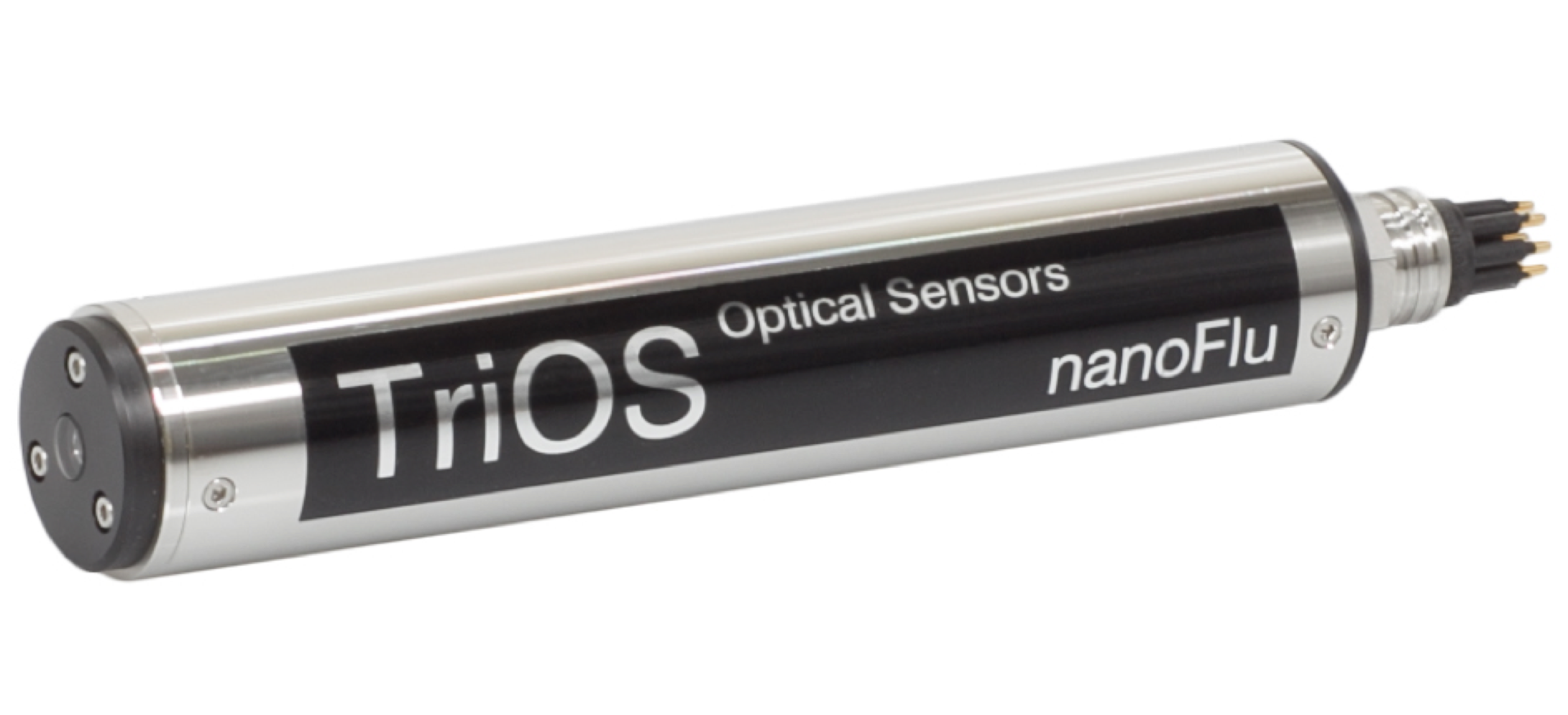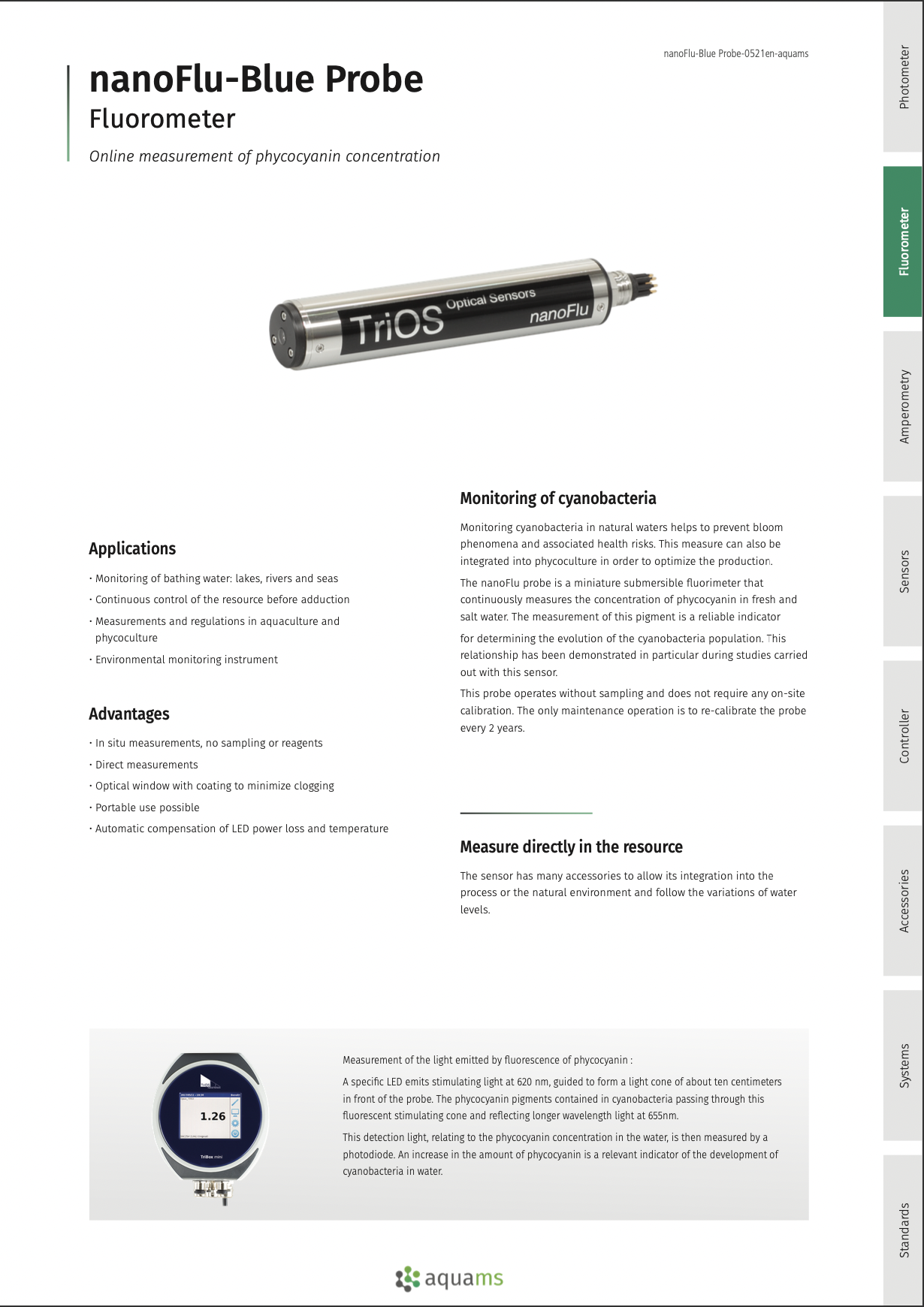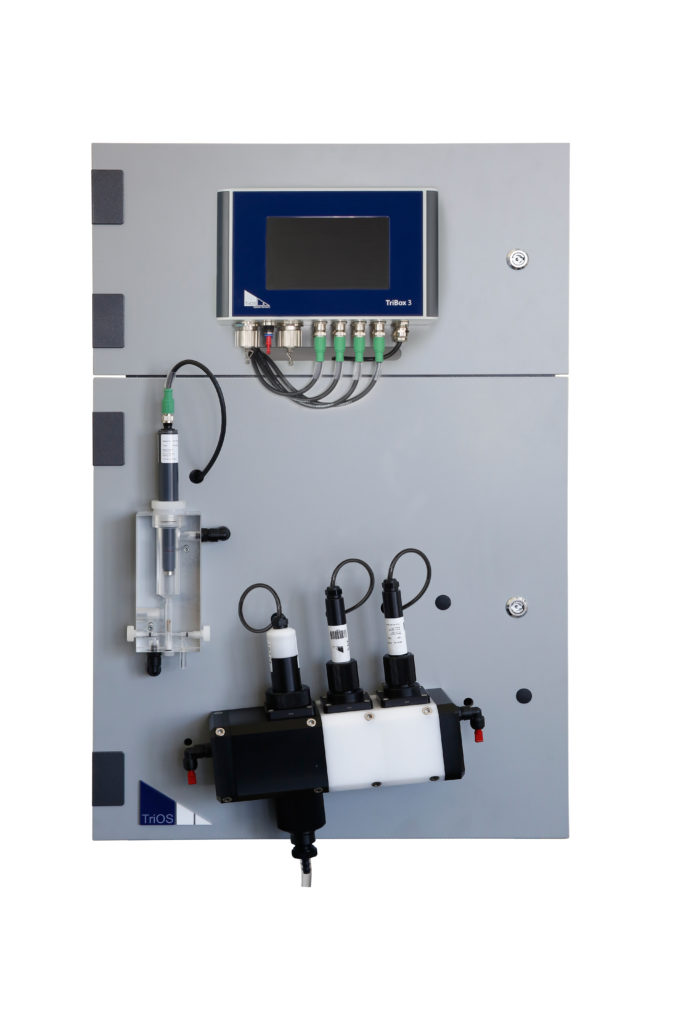nanoFlu-Blue probe (cyanobacteria)
Cyanobacteria monitoring probe

Cyanobacteria are micro-organism also called micro-algae or blue algae. They multiply in water and more particularly in lakes and rivers. Cyanobacterial bloom phenomenon has to be monitored, because the fast growth of these organism can induce the release of toxins such as microcystin in recreational water and drinking water resources, establishing an important health risk. It is also necessary to control cyanobacteria in aquaculture, where their development can jeopardize fish farms. Moreover, these organisms are the target of many research in biotechnologies, both for their biomass valorization and the production of interesting metabolites such as spirulin, or even for energy production.
The nanoFlu-Blue probe is a submersible miniaturized fluorimeter for the fluorescence measurement of phycocyanin, a pigment found in cyanobacteria. The light emitted by the probe (620 nm) make fluoresce this colored pigment flowing in front of the optical window. This visible light emitted by the fluorescence, of a higher wavelength (655 nm), is then detected and measured by a photodiode integrated in the probe.
The probe works without sampling and does not require calibration. The only maintenance operation consists in recalibrate the system once every 2 years.The sensor has many accessories to allow its integration in the process or the natural environment, to follow the variations of water levels or to automate its cleaning.
I'm interested
Measurement principle
Fluorescence :
A specific LED emits a stimulation light at 620 nm, guided to form a light cone of about ten centimeters in front of the probe. The phycocyanin pigments contained in the cyanobacteria pass through this fluorescent stimulation cone and return a longer wavelength light at 655 nm.
This detection light, relative to the phycocyanin concentration of the water, is then measured by a photodiode. Increasing the amount of phycocyanin is a relevant indicator of the development of cyanobacteria in water.
Applications
- Recreational water, lake and river monitoring
- Drinking water resource monitoring
- Aquaculture monitoring
- Laboratory measurement
Advantages
- In situ measurements, no sampling or reagents
- Instant measurement
- Optical window with coating to minimize fouling
- Portable use possible
- Automatic compensation of LED power loss and temperature
| Measurement principle | fluorescence ultra luminous Blue LED |
|---|---|
| Detector | photodiode with interferential filter |
| Parameter | phycocyanin |
| Measurement range | 0...200 µg/l phycocyanin |
| Accuracy | ± 5% |
| Auto control | automatic compensation of light source intensity variations due to wear and temperatures |
| Interference | automatic removal of ambient light |
| Response time | T100 : 6 s |
| Measurement interval | 3 s |
| Probe Body Materials | stainless steel (1.4571 / 1.4404) or titanium (3.7035) |
| Dimensions (L x Ø) | 171 mm x 36 mm |
| Weight | 0.5 kg stainless steel - 0.4 kg titanium |
| Interface | Ethernet (TCP/IP) RS-232 ou RS-485 (Modbus RTU) |
| Power supply and consumption | 12 ... 24 VDC, <1 W (<1.6 W with network) |
| Maintenance | ≦ 0.5 h / month (cleaning of the optical window) |
| Calibration interval | 24 months |
| Maximum operating pressure | - with SubConn waterproof connector: 30 bar - with fixed cable: 3 bars - in flow cell: 1 bar, 2 ... 4 L / min |
| Protection | IP68 |
| Temperature of the field or sample | +2 ... 40 °C |
| Inflow velocity | 0,1 ... 10 m/s |
Document(s)

Datasheet cyanoacteria probe
Fluorometer for phycocyanin measurement - cyanobacteria monitoring
Plug-and-play installation



